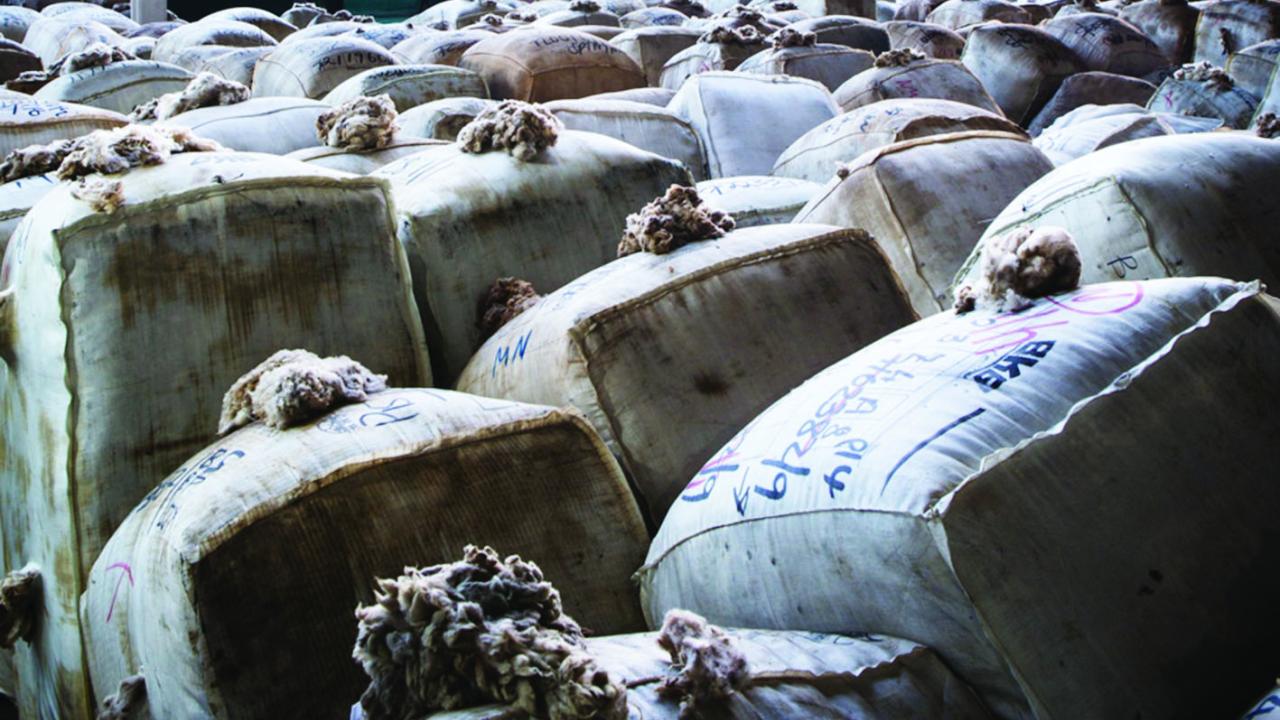Wool market bumping through the winter blues

WOOL industry traders would like to see some more demand obviously and certainly some more volatility to facilitate a few more trading opportunities.
Growers and brokers would dearly like to see some more strength on the demand side and therefore a bit more vigour in the auction room. Processors further upstream, those that haven’t switched off and departed for summer holidays are wondering when they will see the long promised recovery on consumer activity. Just about every politician around the globe is promising that things will improve, but to the consumer it seems that “she’ll be right” just doesn’t cut it anymore.
Against the perceived dour backdrop the wool market continues to stay within its trading range, which for 21 micron now stretches back to October 2020 when the market recovered from the Covid induced fall. It recovered from that fairly quickly, but aside from a temporary spike when China ‘unlocked’ it has not really been able to scale any significant heights since.
So in USD terms the price for 21 micron has bobbled along more or less between a low of 825 and a high of 1025. It is a similar picture in local currency terms with the 21 micron AUD price trading in a range of 1250 to 1450 most of the time, with just a couple of tantalising moments where currency fluctuations allowed it to peek out on the topside for a day or two. Having traded in such a restricted range for a long time will, if 70 years of history is anything to go by, result in a significant rise when it does break out of its range.
Conjecture still abounds about when this will occur, but it definitely will not be in July.
This time of year in the production cycle no matter whether the market is in an uptrend or a downtrend is one of consolidation, greige (unfinished) stock orders in limited quantities, machine maintenance and summer holidays.
Some of the optimists are talking about a recovery beginning in the second half of the calendar year, while those with a glass half empty approach are saying not before the second quarter of 2025. So somewhere along that timeline we will see these trading ranges disbanded and wool prices actually catch up to, and hopefully exceed the cost of production line on the charts. Certainly the forward market has no doubt this will be the case with forward contracts being written this week at a premium of 140 cents to the current spot price for 19 micron in 12 months’ time.
It will probably not be the limit of the uptrend but it does provide a good opportunity for growers to hedge some risk and also for processors to lock in an attractive raw material price for next year as well.
It seems that the spring is getting wound tighter and tighter right along the production and processing pipeline, with greasy wool production trending lower in Australia and Argentina for the coming season.
Early stage processor inventories are running at minimal levels and are unlikely to build given the issues they faced only 12 or 15 months ago when the false dawn of a China recovery saw them build stocks rather recklessly.
Caution is the key metric across all businesses from retail businesses all the way back to topmakers at present. They largely escaped unscathed from the last episode thanks to a benign wool price trading range, but higher interest rates did create some headaches for inventory control managers.
Nobody wants to tempt fate again though, so even though superfine wools are looking very cheap compared to medium merino, and everyone knows that wool is cheap overall, only the very brave will take the plunge and build stock just yet.
Finding that individual or company with deep pockets and a flair for trading is more difficult that the relatively free and easy days of "before Covid", but if there is a small increase in prices over the next couple of selling weeks people could actually start to think about it after the recess.
Given that there are only 30,000 bales on offer next week, and probably not much more than that in the final selling week, those with machines to feed between now and October 1 must have their greasy wool requirements in hand by July 25. That should be enough to keep the market moving forward for the next couple of weeks, although the Aussie Dollar is getting stronger which may take the shine off grower receipts slightly.
As usual it is more about the strength of the US Dollar, rather than the Australian Dollar, but recent data coming from the States indicates that the world’s largest economy has peaked and a September interest rate cut is now all but certain in September, with a couple more pencilled in for later in the year. That will leave Australia sitting on a rock with stubborn inflation preventing a cut here, and potentially keeping the AUD on an upward trajectory.
What happens in China will have a significant impact on the Australian Dollar as well given that they are still by far our largest trading partner and also happen to be our single biggest consumer of woollen products as well.
Next week sees the Third Plenary Session take place in Beijing in which President Xi will set out the long-term economic reform agenda. Exactly what measures will be taken and what new or old directives set in motion will be watched with interest as the competing forces of domestic consumption and international investment are balanced.
Wool is unlikely to get a mention, but any new clarity on the national direction and economic growth targets would be a positive for consumers and therefore domestic consumption.

Add new comment